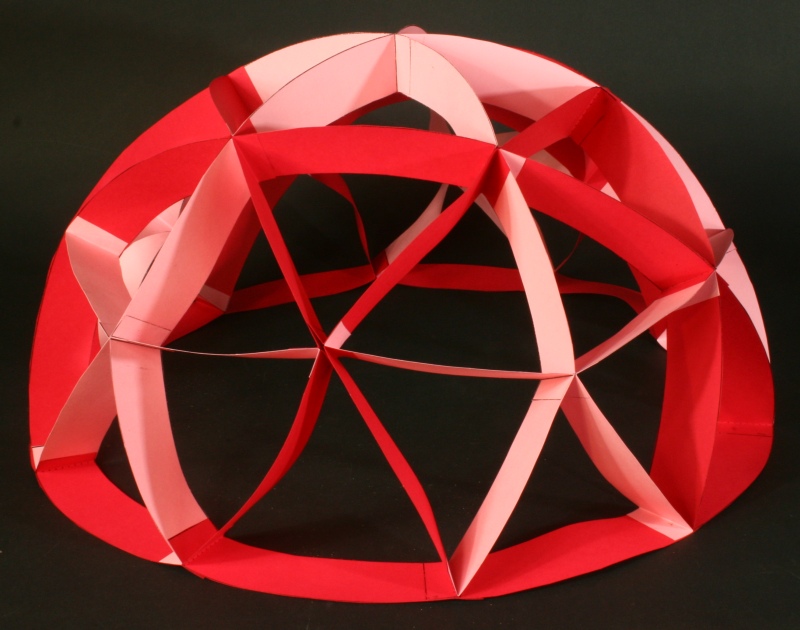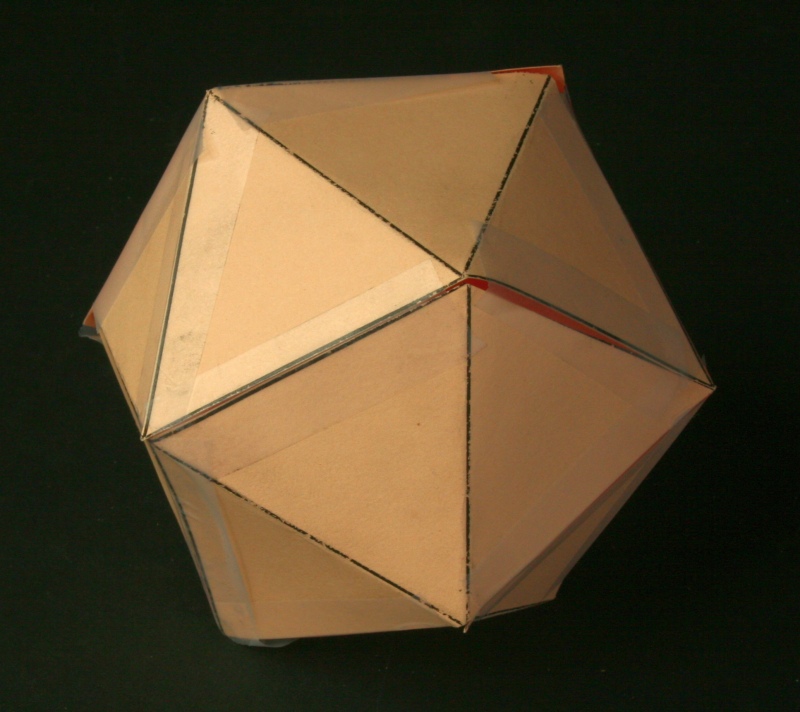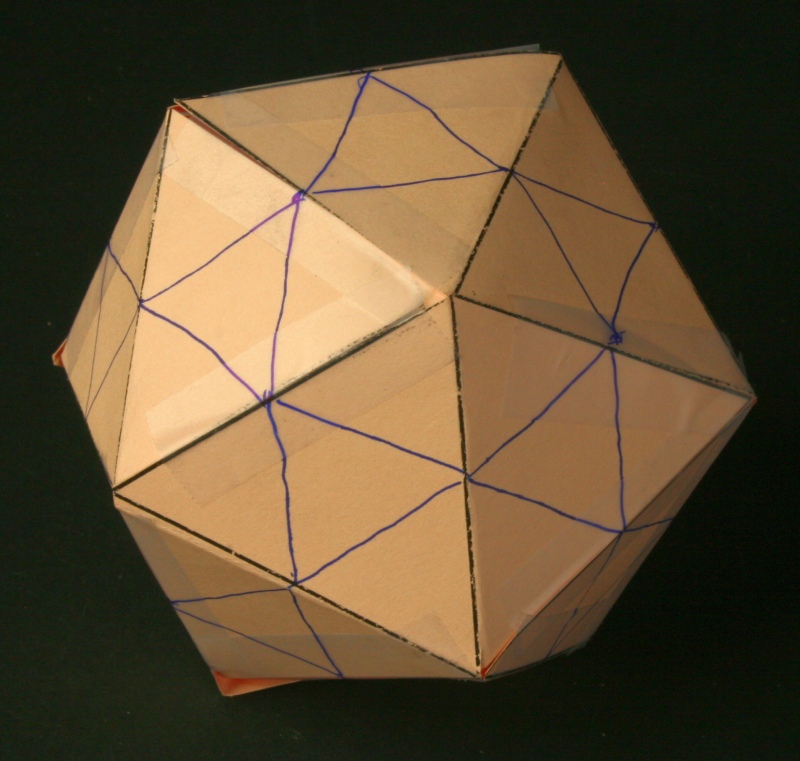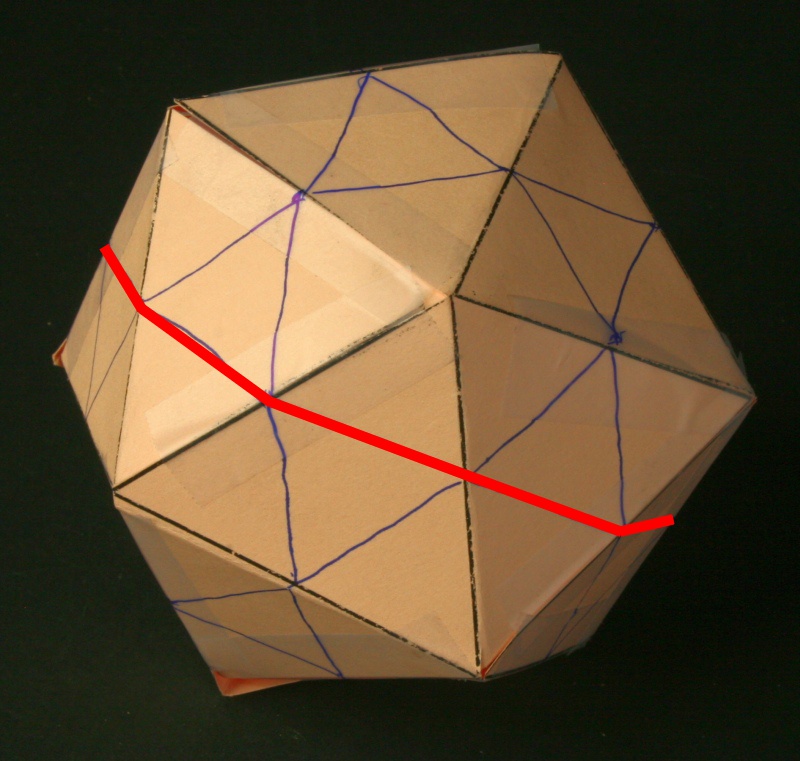7. Students should puzzle out how to connect the
modules. The five remaining struts are used to complete
the equator.
8. It may be useful to improvise a support to
hold the shape while the glue dries. Clothes pins or other
clamps may also help.
Part C. Conclusion
Ask students to compare their paper dome with their marked
icosahedron and observe the analogous structures. (This
provides another example of an isomorphism, as introduced in
the 12-Card Star
workshop.)
Students are now ready to replicate this structure using other
materials at a variety of scales.




